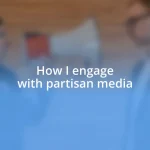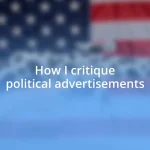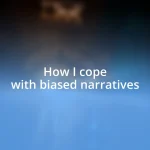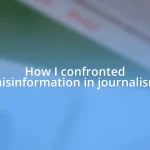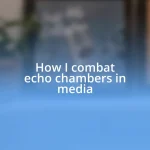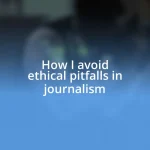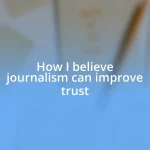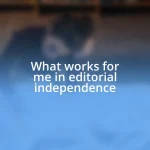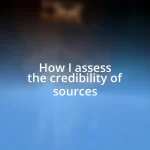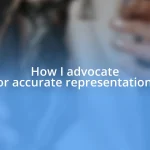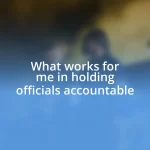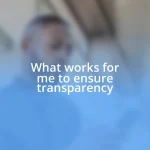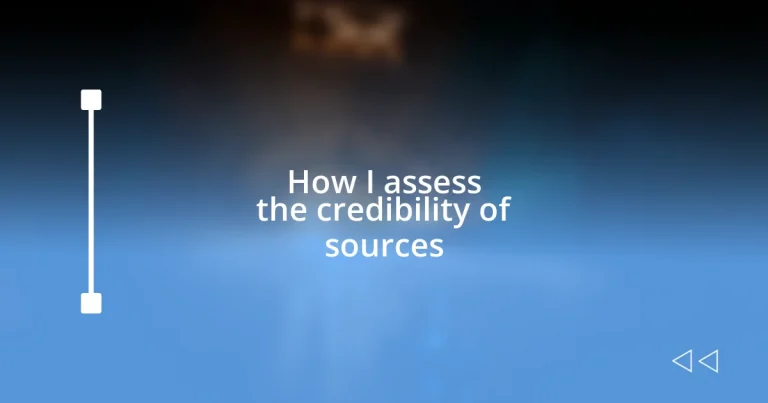Key takeaways:
- Evaluating source credibility involves assessing authorship, publication quality, date, bias, and supporting evidence to ensure information reliability.
- Cross-referencing multiple reputable sources enhances understanding and helps identify biases and discrepancies in reporting.
- Utilizing credible databases and fact-checking tools is essential for accessing trustworthy information and combating misinformation.
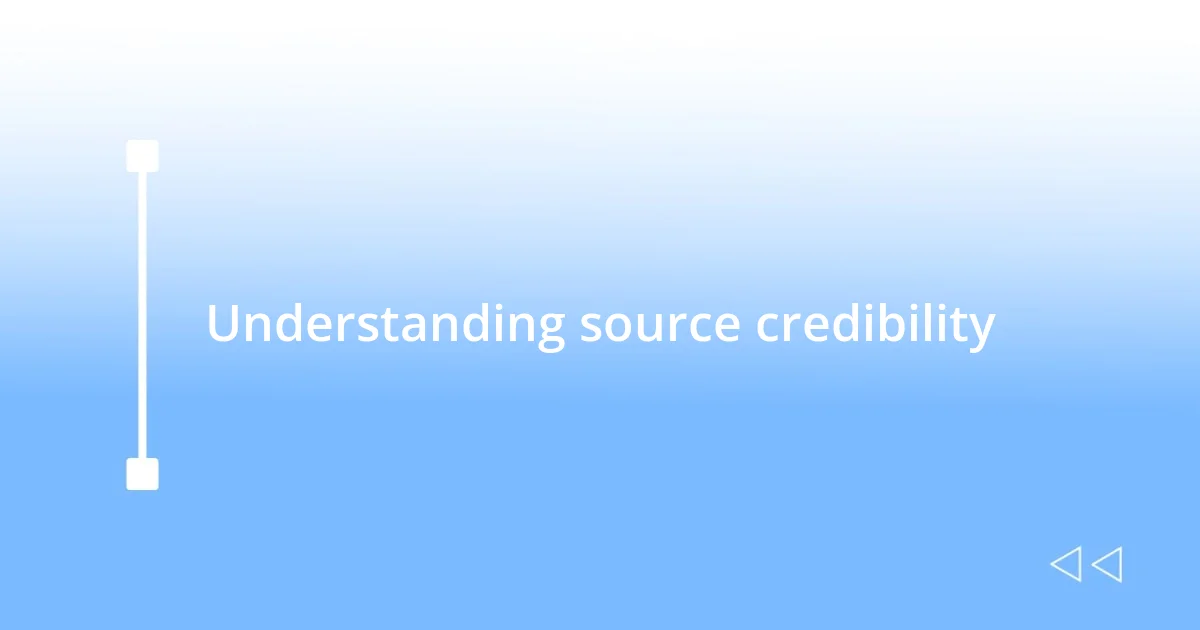
Understanding source credibility
When I think about source credibility, I often recall a time in college when I relied heavily on a popular blog for research. At first, it all seemed so well-articulated and appealing, but as I dug deeper, I realized it was lacking scholarly backing. This experience taught me that not every seemingly credible source holds weight; it’s crucial to assess the authorship and purpose behind the information.
Credibility can feel a bit elusive, can’t it? I’ve learned to evaluate sources like a puzzle, piecing together the author’s qualifications, the publication date, and the intended audience. For instance, if I find an article published in a journal by an expert in the field, it instantly boosts my confidence in the information presented. On the other hand, can you remember a time when you stumbled upon an outdated source? It’s unsettling how quickly information can age and lose its relevance.
One key aspect I always look for is bias. Are there signs that the source is pushing an agenda? I recall once reading an article that passionately campaigned for a particular political view, but I couldn’t shake the feeling that the facts were selectively chosen. It made me wonder—how many other readers were swayed without questioning the validity of the claims? Engaging with sources critically not only enriches our understanding but also empowers us to make informed decisions.
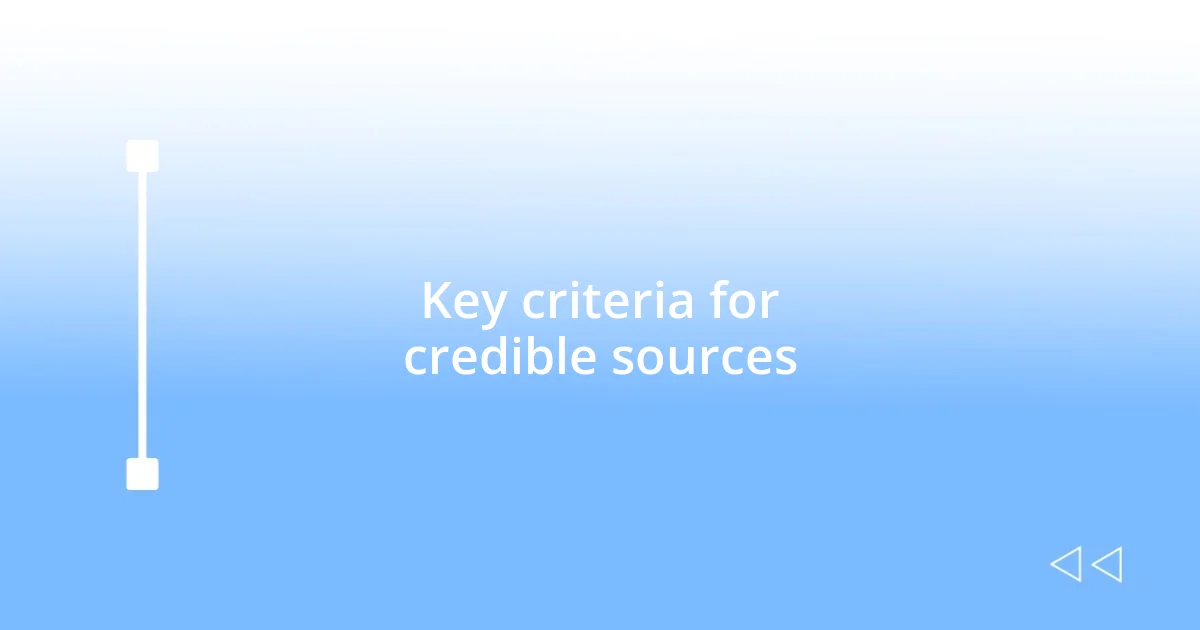
Key criteria for credible sources
When assessing the credibility of a source, I always scrutinize the author’s credentials. I remember when I stumbled upon a fascinating article about climate change. At first, I was captivated by the writing, but then I noticed the author had no background in environmental science. It made me pause. Just because something is well-written doesn’t mean it’s reliable. This revelation reminded me that the author’s expertise can significantly impact the trustworthiness of the information.
To help in my evaluation, I focus on several key criteria:
- Authorship: Check the author’s qualifications and experience in the subject matter.
- Publication: Is the source published in a reputable journal or by an established organization?
- Date of publication: Is the information current or outdated?
- Bias and objectivity: Does the source present information objectively, or does it push a specific agenda?
- Supporting evidence: Are claims backed by credible data, studies, or references?
I’ve found that considering these criteria creates a larger framework for understanding the credibility of a source. Each criterion paints a more comprehensive picture, helping me make informed decisions based on reliable information.
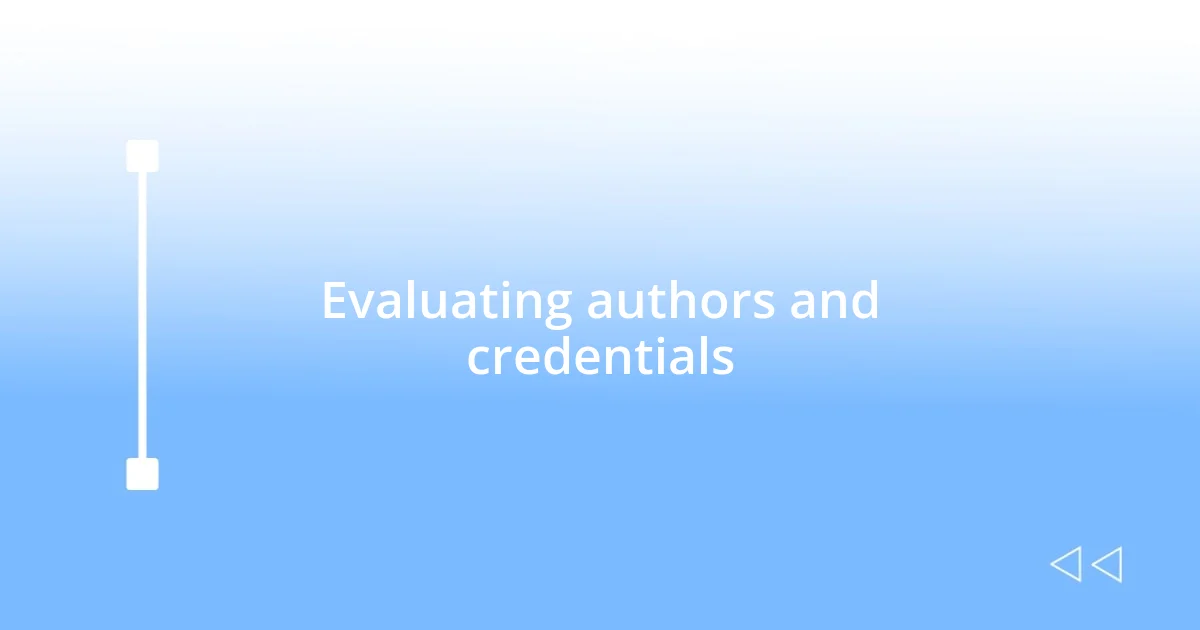
Evaluating authors and credentials
When I evaluate an author’s credentials, I often reflect on my experience researching a controversial medical treatment. I was initially swayed by an article written by someone with an impressive-sounding title, but as I probed deeper, I discovered that their degree was in a completely unrelated field. That realization brought a wave of skepticism—credentials matter, and knowing the author’s background can illuminate whether they truly have the expertise to discuss the topic at hand.
Another time, while exploring historical perspectives on a well-known event, I found an article authored by a professor renowned in the field. This was a game-changer; the depth of analysis and insight offered reassured me that I was engaging with trustworthy material. It’s those moments of clarity that highlight the significance of an author’s qualifications. I genuinely believe that an author’s background can enrich our understanding of complex issues, and recognizing that connection transforms how I consume information.
Ultimately, the interplay between an author’s background and the credibility of their work is crucial. I often ask myself: Does the author’s experience align with the content? This self-reflective questioning has led me to engage more critically with sources, shaping my research habits and enhancing my overall comprehension of the material. Being discerning about authorship not only bolsters my knowledge but also empowers me to make well-informed conclusions.
| Criteria | Significance |
|---|---|
| Authorship | Ensures the author has relevant qualifications and experience in the field. |
| Publication | Identifies if the source is from a reputable journal or recognized organization. |
| Date of Publication | Assesses the relevance of the information based on its timeliness. |
| Bias and Objectivity | Discerns whether the author presents information fairly or with a specific agenda. |
| Supporting Evidence | Verifies if claims are validated by credible data or references. |
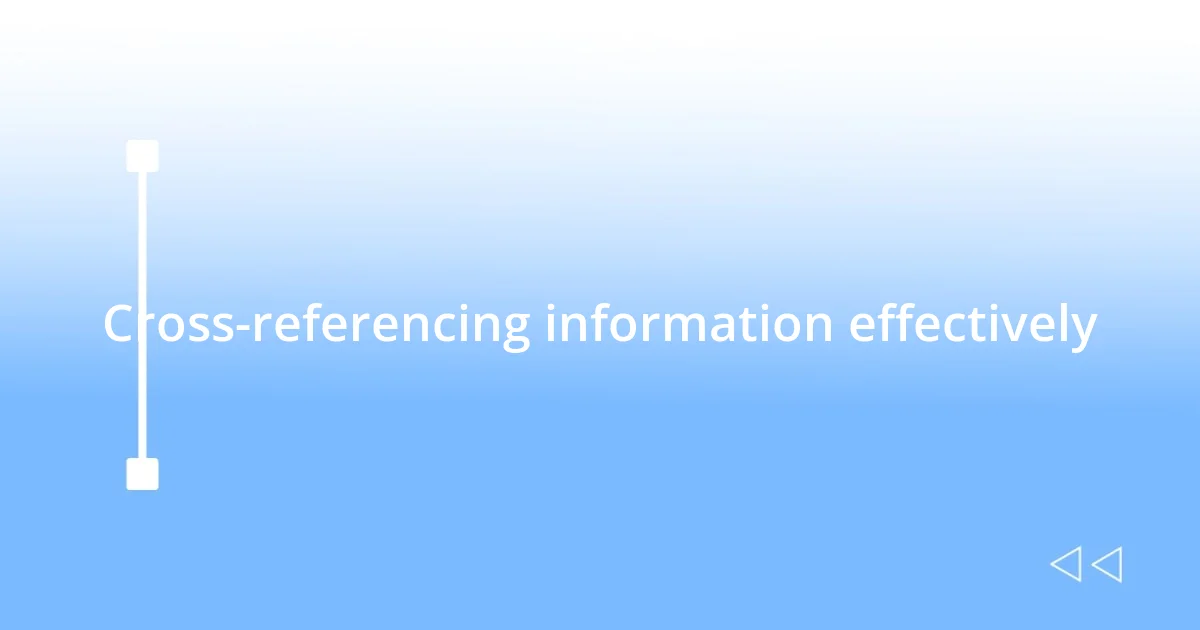
Cross-referencing information effectively
When cross-referencing information, I always make a habit of checking multiple reputable sources to confirm facts. I recall a time when I researched the effects of a dietary supplement, and I found conflicting information across websites. To sort through the chaos, I compared peer-reviewed articles with blog posts. It quickly became evident that the scientifically-backed studies provided more reliable insights than years-old testimonials. How often do we accept claims without seeking corroboration from trusted voices in the field?
Engaging in cross-referencing has made me more aware of the discrepancies in reporting. Recently, while delving into the history of a political event, I encountered various interpretations from different outlets. To gain a clearer picture, I checked historical texts alongside more recent analyses. What surprised me was how my understanding shifted when I accessed primary sources versus secondary interpretations. It really hit home that context matters, and the more perspectives I consider, the deeper my comprehension becomes.
Moreover, I believe that cross-referencing extends beyond just validating facts; it enriches our ability to engage with subjects critically. I often reflect on how this process has shaped my research skills. Each time I discover contrasting viewpoints, I’m reminded that complex issues typically lack a single narrative. In a world where information can be manipulated, seeking diverse sources not only protects against misinformation but also fosters a well-rounded worldview. What have you learned from your own experiences in comparing information?
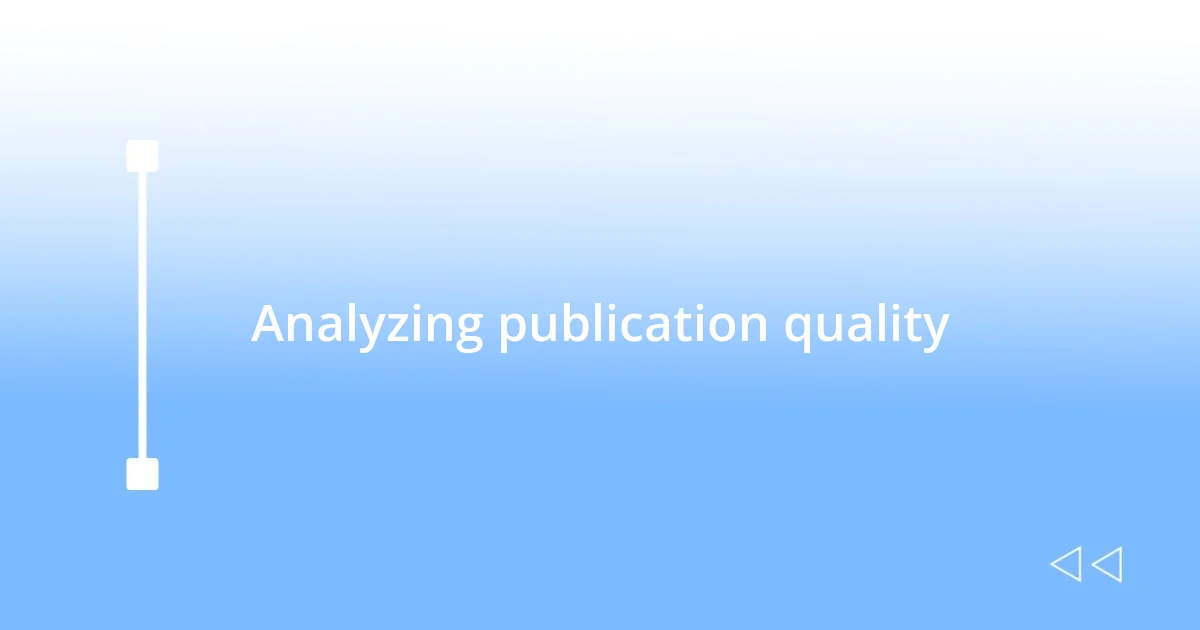
Analyzing publication quality
When I assess the quality of a publication, I take a close look at where the article appears. I remember a time I stumbled upon a striking article in an obscure online outlet. Initially, its flashy headlines caught my attention, but when I investigated further, I found that it wasn’t indexed in any reputable databases. This experience reinforced for me that a source’s platform speaks volumes about its reliability. If the publication isn’t respected in its field, I quickly reconsider how much weight I give to the information presented.
Another critical element is the publication’s editorial process. I’ve seen firsthand how peer-reviewed journals enhance the credibility of research. In contrast, have you ever noticed articles that lack a peer-review process? I once reviewed a paper claiming groundbreaking scientific insights, but without the endorsement of a rigorous editorial standard, I felt unease about its validity. Understanding whether or not a publication undergoes scrutiny helps me distinguish between carefully vetted research and content that may be more opinion than science.
The date of publication is also a crucial factor. In my experience, I’ve often found myself referencing older studies that have since been superseded by more current research. I used to assume that if something was published, it held merit indefinitely. Yet, when I learned about recent advancements that contradicted earlier findings, I felt a bit like I was navigating a ship through fog—only to find clearer waters with updated knowledge! Keeping an eye on the publication date ensures that I’m not only informed but also grounded in the latest evidence-based understanding, which can shift dramatically in fast-moving fields.
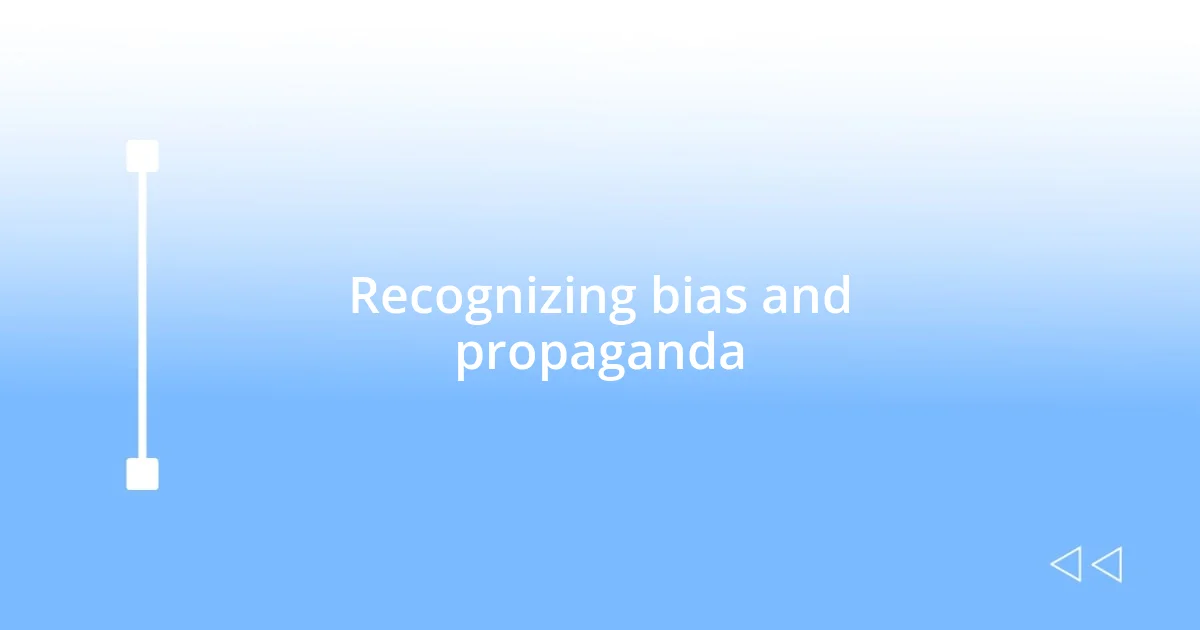
Recognizing bias and propaganda
Bias and propaganda often lurk beneath the surface of seemingly credible sources. I vividly recall a news article that presented alarming statistics about a public health issue. At first glance, it seemed alarming, but a deeper look revealed selective data that painted a much harsher picture than warranted. It made me wonder, how many times do we prioritize shock value over accuracy in our consumption of information?
Recognizing bias requires a keen eye for language. I recently noticed how certain outlets shaped their narratives through emotionally charged words. For instance, when covering a protest, some described it as “spirited activism” while others labeled it as “violent unrest.” This contrast made me reflect on how the choice of words can manipulate public perception. Isn’t it fascinating how two articles can describe the same event yet evoke entirely different feelings in readers?
Propaganda often employs a deliberate framing approach. I find it intriguing how campaigns push specific narratives to influence opinions. During an election cycle, I encountered advertisements that presented information in a way that twisted the truth while seemingly sticking to factual statements. I remember thinking, “Is this really what happened, or is this a creative spin?” This realization has pushed me to scrutinize everything I read and teach others to do the same—because staying informed means recognizing when information is being weaponized.
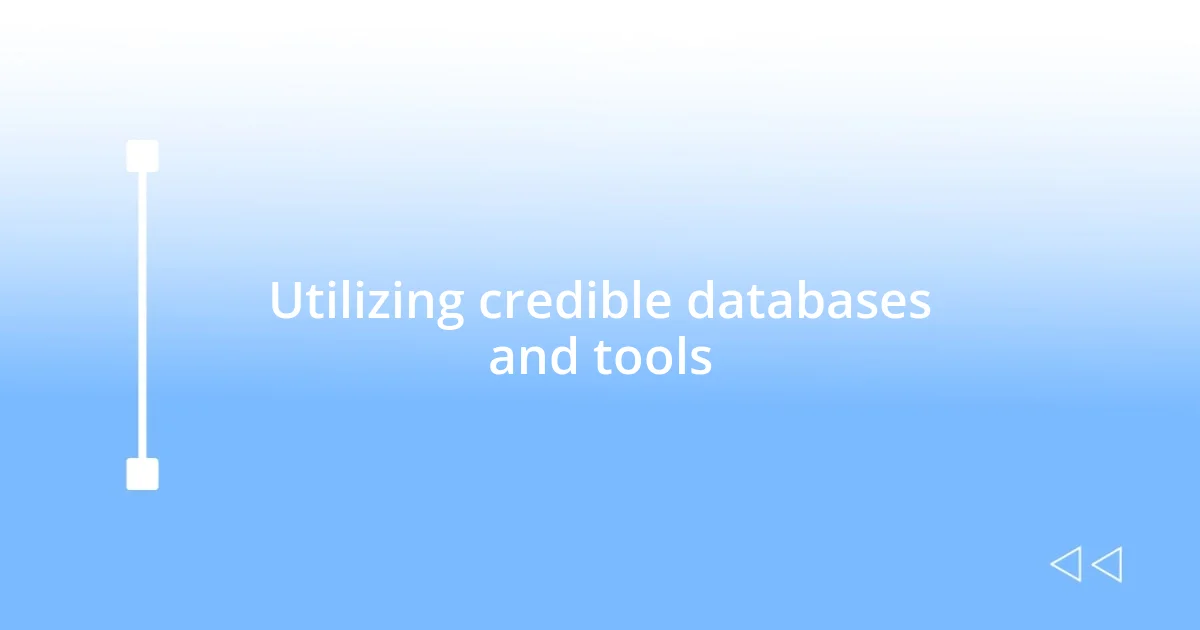
Utilizing credible databases and tools
When I’m searching for trustworthy information, utilizing credible databases can make all the difference. I often turn to resources like PubMed or Google Scholar for academic articles, knowing they provide a wealth of peer-reviewed research. The sense of relief I feel when I uncover reliable studies through these databases is palpable; it’s like finding a compass in a vast, confusing wilderness. Have you ever relied on a questionable source, only to discover that dependable information was just a few clicks away?
Another tool I regularly use is library access to professional journals. I remember being in university and spending countless hours sifting through digital archives to locate articles on niche topics. The feeling of unearthing a pivotal piece of research felt akin to discovering buried treasure! It dawned on me how access to professional journals not only enriches my understanding but also fortifies my arguments with evidence from experts in the field. It has shaped my approach to research—why settle for secondhand information when first-rate information is often available at our fingertips?
Lastly, websites like FactCheck.org and Snopes have become staples in my toolkit for validating claims. During one particularly chaotic news cycle, I found myself bombarded with conflicting reports about a major event. I decided to put these sites to the test, and they quickly revealed the truth behind the noise. That moment was eye-opening; it showed me the power of fact-checking in an era where misinformation spreads like wildfire. I now ask myself, how can I engage in meaningful dialogue without being armed with accurate information? This constant reflection has solidified my belief that credible databases and tools are indispensable in our quest for knowledge.
